 We’ve all browsed the store and looked through the myriad energy gel options available. Almost every major sports nutrition manufacturer currently produces some form of energy gel. While the purpose of these nutritional products -providing carbohydrates for short term energy during long duration cardio- is the same for each brand, there are differences in ingredients and preparations between each of them. Knowing the differences will help you make the most of this nutritional tool. Let’s explore some of the common nutritional components of these gels and then look at a few of the more common energy gels available at Running Free, how they differ and how they will be useful to you.
We’ve all browsed the store and looked through the myriad energy gel options available. Almost every major sports nutrition manufacturer currently produces some form of energy gel. While the purpose of these nutritional products -providing carbohydrates for short term energy during long duration cardio- is the same for each brand, there are differences in ingredients and preparations between each of them. Knowing the differences will help you make the most of this nutritional tool. Let’s explore some of the common nutritional components of these gels and then look at a few of the more common energy gels available at Running Free, how they differ and how they will be useful to you.
Glucose
Glucose, also referred to on packaging as dextrose or d-glucose, is a simple carbohydrate. It is very quickly absorbed into the body and metabolized to provide energy. In concentrated form it can be hard on the stomach and cause irritation and nausea. However, it can be absorbed directly into the blood through the veins inside the cheek if held in the mouth. This ingredient forms the bulk of many gels and is inexpensive but highly sweet and sticky
Fructose
Sometimes found mixed with glucose as glucose-fructose. Like glucose, fructose is a simple carbohydrate, although it is absorbed slightly more slowly than glucose into the body. It also has a lower apparent sweetness. Some individuals poorly metabolize fructose and this can cause gastrointestinal troubles. It is also the major component of high-fructose corn syrup which is used in some gels.
Sugar
Sugar, also referred to as sucrose, is a sugar compound composed of one molecule of glucose and one of fructose. It is absorbed slightly slower into the body than either of its components are alone, and is slightly less sweeter. Sugar, along with glucose and fructose, is inexpensive and is easier on the stomach than pure glucose or fructose.
Maltodextrin
Maltodextrin is a complex carbohydrate composed of linked molecules of glucose (dextrose). Depending upon the type, it may be sweet or lack any sweetness at all. Some forms are absorbed as quickly as glucose and some are absorbed much more slowly. Many manufacturers include it to provide a form of energy that lasts longer than a simple sugar and to decrease the sweetness and stickiness of the gel. It is also less likely to cause stomach irritation. Maltodextrin costs the most of each of the carbohydrate ingredients.
Electrolytes
Although the primary function of most gels is to provide rapid energy, some choose to include small amounts of electrolytes (sodium, potassium, calcium and magnesium). There may be some benefit to long duration cardio primarily if gels are used as the main source of nutrition. They are referred to on labels as sodium chloride, potassium chloride, sodium citrate, calcium chloride, calcium carbonate and magnesium chloride
Amino Acids
Some gels include Branched Chain Amino Acids in their blend. There is limited science showing that BCAA’s may improve long term cardio performance but the evidence is not concrete. They are referred to on labels as L-leucine, L-valine, L-alanine and L-Isoleucine). They are relatively tasteless.
Caffeine
Some gels feature the addition of caffeine in small amounts to provide a limited boost in performance and alertness. Many manufacturers offer at least one of their flavours with caffeine added. Although the amount is small, caution should be advised when fueling for longer events as the total dose will be high when consuming multiple gels. Caffeine also irritates the stomach, can cause acid reflux and increases urine production.
Everything Else
All gels contain additional ingredients that don’t affect the end performance on the body. These include thickeners, preservatives, flavourings and colours and citric acid to provide tartness. Many manufacturers include additional incredients, supplements or vitamins however these are secondary ingredients that are unlikely to affect perfomance and shouldn’t influence your choice of product.
How do I choose a product for me?
Like most sports nutritional products, you should try many different brands and see what type of product works best for you. In a gel your considerations are how easy it will be on your stomach, how well you can tolerate the taste, flavour and sweetness while under a heavy exercise load, and how you feel the product works for you (how much energy it provides or how well it helps you over the wall). If you plan on racing with a product, make sure to train with that product under similar intensity levels to make sure there are no surprises on race day. Lastly price is a consideration – for long duration training and races you will be using many of these, so make sure to pick one that fits your budget. If you know that certain ingredients have given you trouble in the past, choose a product without them. The ‘everything else’ ingredients are sometimes a nice touch but shouldn’t be your primary consideration when choosing a product.
Now, let’s look at a few of the gels available at Running Free in stores and online…
1) Hammer Gel -By Hammer Nutrition. Available in 11 flavours. $1.99 each or $45.99 for a box of 24
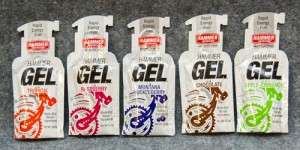
Hammer Gels are composed primarily of maltodextrin as the energy source, providing a longer duration release of energy and a lower level of sweetness compared to most gels. They tend to be easy on the stomach, and the flavours are mild and tolerable. They include a small amount of BCAA’s.
2) eLoad energy Gels -by eLoad. Available in 4 flavours. $40.99 for a case of 24.
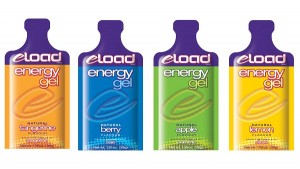
eLoad gels are a mixture of maltodextrin and simple sugars to provide a mix of fast and slow burning fuel to your body. Their flavours are mild and quite tolerable with moderate sweetness. They are advertised as being low acid and preservative free. They have a small amount of electrolytes as well.
3) GU gel – by GU. Available in 12 flavours. $2.05 each or $47.76 for a case of 24.
GU gels are a mix of maltodextrin and fructose to provide a slower, more sustained energy and are consequently less sweet than gels feautring a large amount of simple sugars. Available in a wide variety of flavours and feature the addition of small amounts of electrolytes, BCAA’s and vitamins.
4) Powerbar Gel -by Powerbar. Available in 4 flavours. $38.99 for a case of 24.
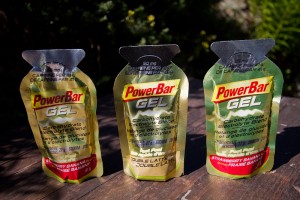
Powerbar gels are a mix of maltodextrin and fructose, and like the GU gels are designed to provided sustained energy. Feature the addition of a substantial amount of electrolytes. Minimal extras in these gels mean that they are a cost effective choice, although flavour choices are limited.
5) Honey Stinger Gel – by Honey Stinger. Available in 5 flavours. $48.99 for a case of 24.
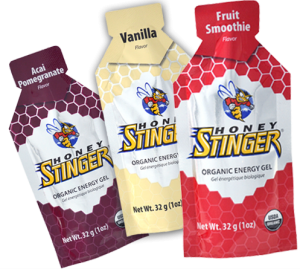
Honey stinger gels derive their sweetness from honey (a naturally produced mixture of glucose-fructose) and tapioca syrup, a complex carbohydrate. Most of the flavours overwhelmingly taste like honey. Feature the addition of moderate amounts of electrolytes and have natural flavours.
-Dan P.




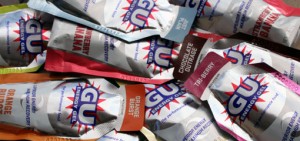













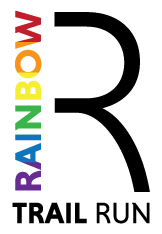



Great job on this article! It helped sort out some of the questions I have had.